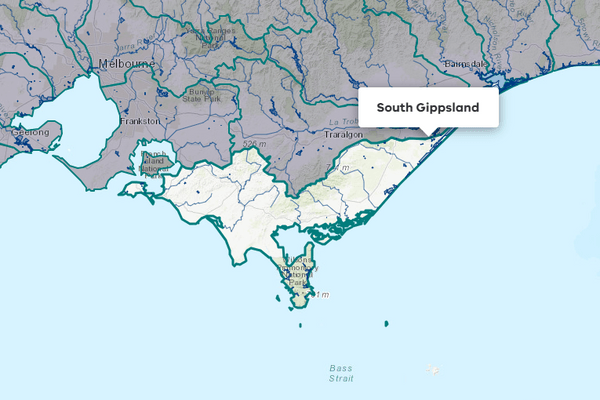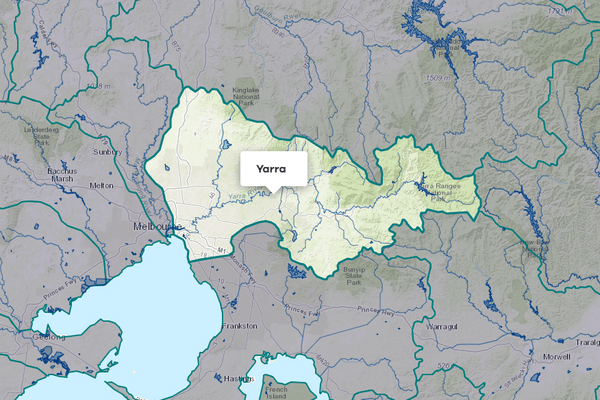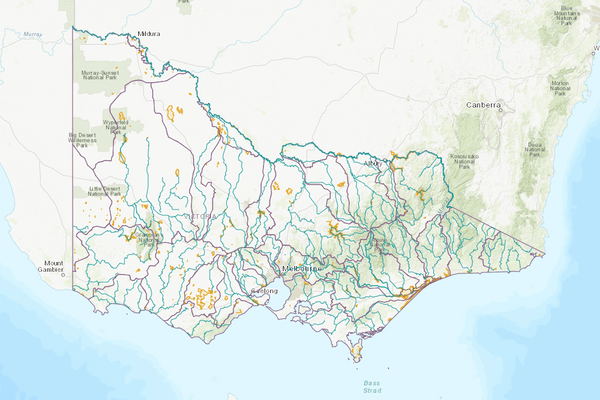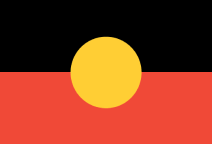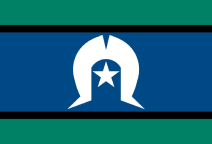About the area
The Bunyip basin covers the Mornington Peninsula and much of Melbourne's south-eastern suburban area, as well as productive farmland to the east and south.
The basin includes the Lang Lang and Bunyip rivers, which flow into Western Port, and the Patterson River which flows into Port Phillip Bay.
Annual rainfall over most of the basin is 600-900 mm with higher falls in the north-east of over 1,200 mm.
More information on water management and accounting is detailed in Water explained.
2023-24 overview
Available water
Catchment inflow was lower than the previous year.
Licensed diversion restrictions
There were no restrictions on licensed diversions, the same as the previous year.
Water use
Less water was used for consumptive purposes than the previous year.
When compared to the previous year, in 2023-24:
- less rainfall was received, catchment inflow was lower and storage levels were similar
- licensed diversion restrictions were the same with no restrictions on licensed diversions from streams
- less water was diverted from the basin for consumptive uses.
Climate
Rainfall
In 2023-24, less rainfall was received in the Bunyip basin than the previous year. Rainfall was:
- very much below the long-term average in the western part of French Island and from Mornington to Portsea
- below average in the middle of the basin up to the north-west corner and the eastern half of French Island
- average across the rest of the basin
Figure 1 displays the rainfall received in 2023-24 compared to the long-term average (1975-2024).
Figure 1: Rainfall deciles, Bunyip basin
Sourced from the Australian Bureau of Meteorology
River basin water balance
This section describes the known and estimated inflows, outflows and change of storage volumes in the basin.
More detail on major on-stream storages, catchment inflows, diversions and small catchment dams can be found in the sections below the water balance.
Diversions in the Bunyip basin were relatively low as a proportion of the water flowing through the basin. Of the total inflows, 93% flowed out into Port Phillip Bay and Western Port in 2023-24.
Water balance table
The table below shows the total volumes of water available and supplied from water resources in the Bunyip basin in 2023-24.
Table 1: Water balance, Bunyip basin
Major on-stream storages
Major - greater than 1,000 ML - on-stream storages in the Bunyip basin are included in the water balance. Although Cardinia Reservoir is in the Bunyip basin, it is reported in the Yarra basin.
Storage levels
The Tarago Reservoir storage level in the Bunyip basin reached 100% on 30 June 2024.
Similar to the previous year
Storage levels were also at 101% on 30 June 2023.
Table 2: Storage levels, Bunyip basin
Inflows
Catchment inflow
Catchment inflow represents the volume of water flowing into the waterways of a basin. It is calculated as the total outflows and change in storage minus the known inflows.
Above average inflows of 636,437 ML were received (113% of the long-term average of 564,400 ML), less than the previous year (244% of the long-term average).
Above average inflow received
Catchment inflow was 113% of the long-term average of 564,400 ML.
Less water received than the previous year
Catchment inflow was lower than the previous year (244% of the long-term average).
Wastewater treatment plants
Water treated at wastewater treatment plants can be used to supplement water available in the basin. Water discharged to waterways from treatment plants is included as an inflow to the water balance.
Information on treatment plants is reported in the water supply local reports for the water corporation responsible for managing the plant.
In this basin, wastewater treatment plants are managed by Gippsland Water, Melbourne Water and South East Water.
Outflows
Diversions
In 2023-24, 33,613 ML of water was diverted for consumptive uses: town, domestic and stock, irrigation and commercial supply. This was lower than the 42,995 ML diverted in the previous year. While the diversion volume was similar to the previous year, there was an 8,938 ML decrease in the estimation of small catchment dam use volume.
Small catchment dams
Water harvested, used, and lost by small catchment dams (farm dams) is included in the water balance.
Table 3: Small catchment dams, Bunyip basin
Entitlements and compliance
Entitlements provide the basis for how water is shared in the basin.
Melbourne Water holds a bulk entitlement to surface water in the Bunyip basin. This entitlement is one of four that contribute to the Greater Yarra system - Thomson River Pool, which primarily supplies Melbourne and supports regional urban water corporations, including Barwon Water, Greater Western Water, Gippsland Water, South Gippsland Water and Westernport Water.
The Tarago and Bunyip Rivers Environmental Entitlement 2009 provides the Victorian Environmental Water Holder (VEWH) with a 10.3% share of inflows to Tarago Reservoir. The water available under the entitlement is used to support streamflows and is not diverted out of the waterway.
Entitlement volumes
Rights to water in the Bunyip basin are shown in Table 4.
Entitlement volumes represent a maximum volume of water that can be taken in a one-year period. The volume available in a particular year is dependent on the rules for allocating water set out in the entitlement and the seasonal conditions in that year, which can vary. The rules for allocating water under an entitlement differ between entitlements and systems. This affects the ability and likelihood of water being taken in a particular year.
Table 4: Annual entitlement volumes at 30 June, Bunyip basin
Available water and take under entitlements
Total water available under entitlements represents the volume of water that was available to be taken by entitlement holders in 2023-24. The volume includes carryover from the previous year, seasonal allocations and net trade into the basin.
Water taken
There was 27,323 ML taken in 2023-24, less than the previous year (32,665 ML).
Restrictions on licensed diversions from streams
There were no restrictions on licensed diversions from streams in 2023-24, the same as during the previous year.
Available water and take table
This table shows the volume of available water and the volume taken under entitlements in 2023-24.
More information on available water and take has been detailed in How we account for surface water.
In 2023-24, less water was taken under entitlements than the previous year.
Table 5: Available water and take under entitlements, Bunyip basin
Compliance
Compliance against water entitlements is reported for this basin in 3 areas:
- entitlement issued: that the volume of entitlements issued in a basin does not exceed formal caps, and has not increased without appropriate approvals
- water taken: that the volume of water taken during the year does not exceed the volume considered to be available for consumptive and/or in-stream use during that year
- bulk entitlement provisions: that holders of entitlements do not breach any provisions that are documented in their bulk entitlement orders.
Total entitlement volume
There was no net increase in the total entitlement volume from the previous year.
Total volume diverted
The total volume diverted under entitlements (27,323 ML) was within the volume available for the year (80,530 ML).
Individual bulk entitlements
No individual bulk entitlement holder took more than the annual volume made available to them.
Exceptions to compliance
Individual bulk entitlement holders complied with all provisions in their entitlements.
Water for the environment
Environmental watering sites
Environmental watering sites and environmental values in the Bunyip basin that depend on water for the environment include:
- Western Port, which is listed as an internationally significant wetland under the Ramsar Convention and which relies on freshwater inputs from the Bunyip basin to function ecologically
- populations of threatened dwarf galaxias and Australian grayling, including in the Tarago and Bunyip rivers.
Environmental water reserve
In 2023-24, water for the environment in the Bunyip basin comprised:
- the Tarago and Bunyip Rivers Environmental Entitlement 2009, which includes 10.3% of inflows held by the VEWH
- water set aside for the environment through the operation of passing flows conditions:
- on consumptive bulk entitlements held by Gippsland Water and Melbourne Water
- on licensed diversions
- all other water in the basin not allocated for consumptive uses: this water also provides social, recreational and cultural benefits.
Environmental water use
In 2023-24, 453 ML of environmental water was delivered in-stream in the Bunyip basin.
Management responsibilities
Management of water in the Bunyip basin is undertaken by various parties
| Authority | Management responsibilities |
|---|---|
| Gippsland Water |
|
| Melbourne Water |
|
| South East Water |
|
| Southern Rural Water |
|
| Water supply system | 2022-23 (ML) | 2023-24 (ML) |
|---|---|---|
| Melbourne Water | 13,416 | 13,422 |
| Moe System | 3,567 | 3,965 |
| Neerim South System | 219 | 208 |

